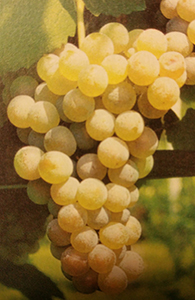 DELIVERY FROM £4.95
DELIVERY FROM £4.95 FREE DELIVERY FOR ORDERS OVER £100
FREE DELIVERY FOR ORDERS OVER £100Home » Community » Wine and Grape Guide » Vespaiola

The Vespaiola grape is a white variety native to the Veneto, particularly in the hills around Vicenza, with deep historical roots in the town of Breganze. While the precise origin of the grape remains uncertain, its documented presence dates back to 1825, when Acerbi mentioned it in the areas of Bassano and Marostica.
The name Vespaiola - much like Vespolina - comes from the Italian word “vespa”, meaning wasp, and refers to the insect’s strong attraction to the grape’s high sugar content in the period close to harvest. This natural sweetness is a key trait of the variety and plays a central role in its versatility.
Vespaiola is most prominently featured in two distinct wines under the Breganze DOC: the dry Vespaiolo, and the sweet, passito-style Torcolato. Vespaiolo is a dry white wine, appreciated for its freshness, fruit-driven character, and easy-drinking style. Torcolato, on the other hand, is made from grapes that are dried before fermentation, resulting in a sweet wine with impressive structure, intensity, and ageing potential.
The Vespaiola vine is moderately vigorous and reaches average ripening time. It produces small, winged, cylindrical-conical bunches that are not very compact, and features white, medium-sized berries with thick, yellow-golden skins that are very waxy and substantial. The vine’s leaves are typically small and round (orbicular).
When vinified as a dry wine, Vespaiola produces a pale straw yellow wine with delicate golden reflections. The nose is subtle and refined, offering gentle notes of fresh fruit and herbs, rather than pronounced intensity. On the palate, the wine is fresh, well-structured, and fruit-forward, with a clean, satisfying finish. The resulting wine is known as Vespaiolo, particularly under the Breganze DOC, where it is celebrated for its elegance and drinkability..
When the grapes are dried for Torcolato, the resulting wine is golden yellow with rich amber tones. The bouquet becomes intense and complex, with aromas of dried flowers, flint, and honey. On the palate, Torcolato reveals a harmonious balance of sweetness and acidity, giving it both depth and freshness, making it a standout among Italian dessert wines.



Before we say ciao, why not join our newsletter & stay up to date on everything happening on planet Italyabroad.com